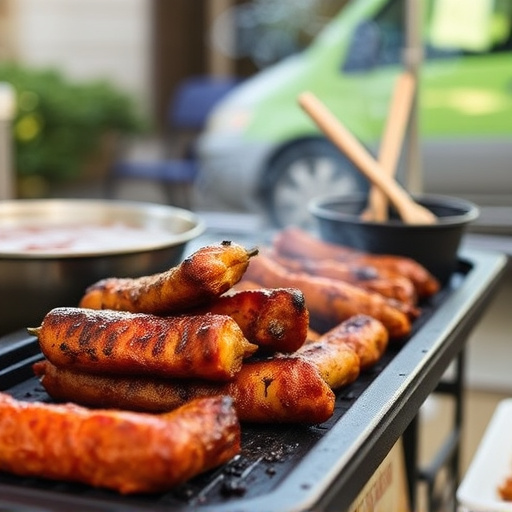Selecting the right cut of baby back ribs and applying a dry rub with paprika, brown sugar, salt, and pepper are crucial steps in crafting mouthwatering BBQ ribs. Cooking at a consistent 225°F (107°C) for 3-4 hours using low and slow techniques breaks down collagen for tender ribs without drying them out. Monitoring internal temperature with digital thermometers and applying barbecue sauce halfway through ensures juicy, flavorful results in any recipe for BBQ ribs.
Unleash the ultimate BBQ experience with a mouthwatering recipe for savory smoked ribs! This guide takes you on a journey from selecting the perfect ribs to mastering the art of slow-smoking. Learn the secrets to creating an irresistible dry rub, understanding the low-and-slow technique, and achieving the tender, juicy texture that makes these ribs so addictive. With precise cooking times and moisture tips, your BBQ game will reach new heights!
- Selecting the Right Ribs for Your BBQ Ribs Recipe
- The Art of Dry Rubbing: Seasoning Your Ribs to Perfection
- Mastering the Smoking Process: Low and Slow Technique Explained
- Cooking Time and Temperature: How Long Do You Need to Smoke Ribs?
- Tips for Maintaining Moisture and Achieving Tender, Juicy Ribs
Selecting the Right Ribs for Your BBQ Ribs Recipe

When it comes to crafting the perfect recipe for BBQ ribs, choosing the right cut is half the battle won. For low and slow smoking, baby back ribs are a popular choice due to their tender texture and ample marbling. Look for ribs that have a good balance of meat and bone, with a visible layer of fat, which helps retain moisture during the long cooking process. This cut allows for the meat to shrink slightly, ensuring each rib remains juicy and flavorful after hours of slow smoking.
Avoid cuts like spareribs, which are more suitable for faster cooking methods, as they can become tough if smoked too slowly. The key is to select ribs that will hold up well under low heat, allowing the smoke and time to tenderize the meat naturally, resulting in a mouthwatering recipe for BBQ ribs that will satisfy any appetite.
The Art of Dry Rubbing: Seasoning Your Ribs to Perfection
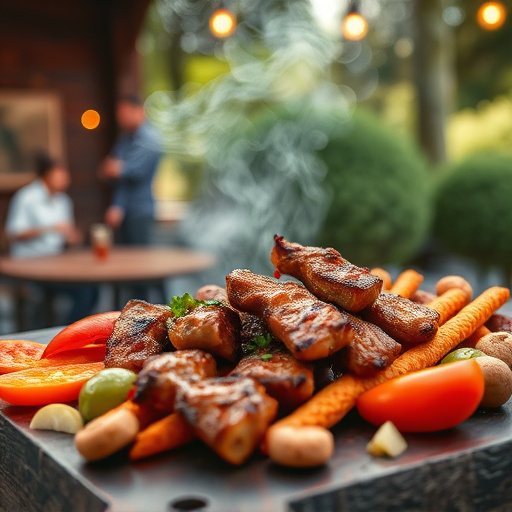
The dry rub is a crucial component in achieving mouthwatering, perfectly seasoned BBQ ribs, especially when smoked low and slow. This simple yet potent mixture of spices acts as a shield, locking in moisture while adding depth and complexity to the meat’s flavor profile. The art lies in balancing sweetness, heat, acidity, and savory notes to complement the rich taste of ribs. A well-crafted dry rub can transform your average rack into an extraordinary culinary experience.
When preparing your recipe for BBQ ribs, consider a blend of common spices like paprika, brown sugar, salt, pepper, garlic powder, and onions. Adjusting the quantities based on personal preference will result in a unique twist. Rubbing this mixture all over the ribs before smoking allows the flavors to penetrate and create an irresistible crust. The slow cooking process then gently breaks down the collagen, making the ribs tender and allowing the seasoning to shine through with each bite.
Mastering the Smoking Process: Low and Slow Technique Explained
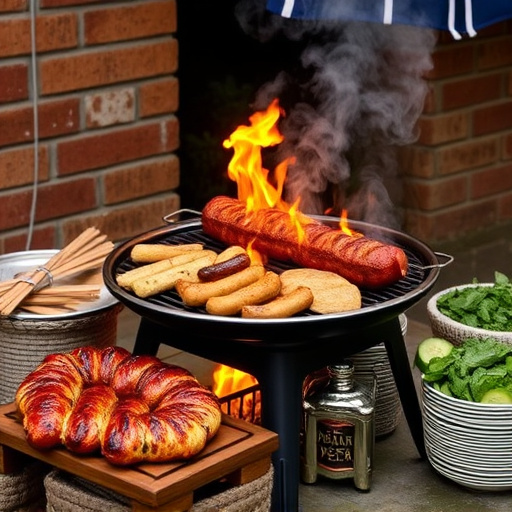
Mastering the art of smoking ribs is a key step in crafting the perfect recipe for BBQ ribs. The low and slow technique is a time-honored method that results in tender, juicy meat with a deep, rich flavor. This process involves cooking the ribs at a low temperature (typically around 225°F or 107°C) for an extended period, often several hours. By keeping the heat low, the collagen in the meat slowly breaks down, transforming into gelatin, which keeps the ribs moist and tender.
The beauty of this method lies in its patience. Slow smoking allows the flavors from the rub and sauce to deeply penetrate the meat, creating a complex taste profile that is hard to achieve with quicker cooking methods. It’s important to maintain a consistent temperature throughout the process, using a reliable smoker or grill designed for low-and-slow cooking. Regularly checking and maintaining the fire, as well as monitoring the temperature, ensures even smoking and prevents the ribs from drying out.
Cooking Time and Temperature: How Long Do You Need to Smoke Ribs?
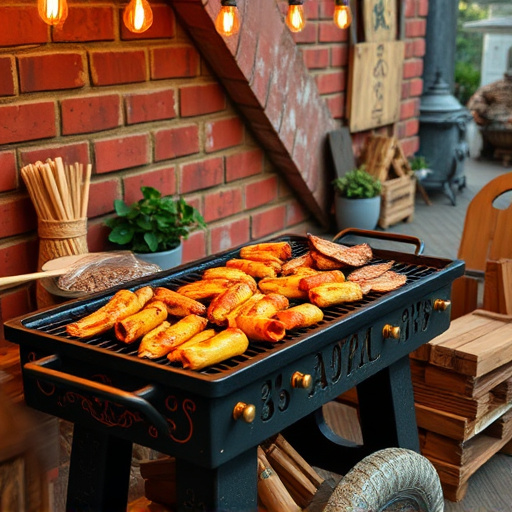
When it comes to crafting the perfect recipe for BBQ ribs, one of the most crucial factors is understanding the art of low and slow smoking. The ideal cooking time for savory ribs can vary depending on various elements like the size of the rib rack, the heat source used, and personal preference for tenderness. Typically, for mouthwatering, fall-off-the-bone ribs, plan on smoking them for 3 to 4 hours at a consistent temperature between 225°F to 250°F (approximately 107°C to 121°C).
This slow and steady approach allows the collagen in the meat to break down, resulting in tender ribs. The lower end of this temperature range is ideal for longer cooking times as it prevents overcooking and drying out the meat while ensuring a consistent, gentle heat that gently transforms your ribs into a delicious culinary delight.
Tips for Maintaining Moisture and Achieving Tender, Juicy Ribs
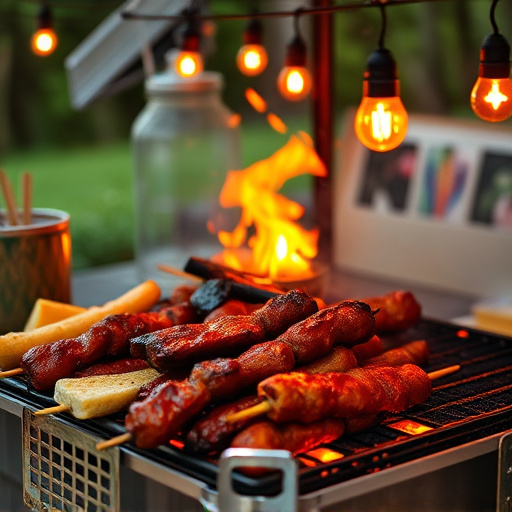
Maintaining moisture and achieving tender, juicy ribs is an art that perfected with time and patience. One key tip is to use a dry rub before smoking. A blend of spices like paprika, brown sugar, salt, and pepper creates a delicious crust that not only adds flavor but also helps to retain moisture during the long smoke. Applying a thin layer of barbecue sauce halfway through the cooking process can also prevent dryness. Avoid brushing it on too early or too often; a light coat at around 4-5 hours into the cook will help glaze the ribs without diluting their natural juices.
Another crucial technique is to never puncture or cut into the ribs to check for doneness. The slow, low-and-slow method relies on maintaining consistent temperature and moisture levels inside the smoker. Instead of pricking them, rely on digital meat thermometers inserted into the thickest part of the rib meat. This ensures you’re cooking the ribs to perfection—around 203°F (95°C) internal temperature—without letting in any extra air that can dry them out.
